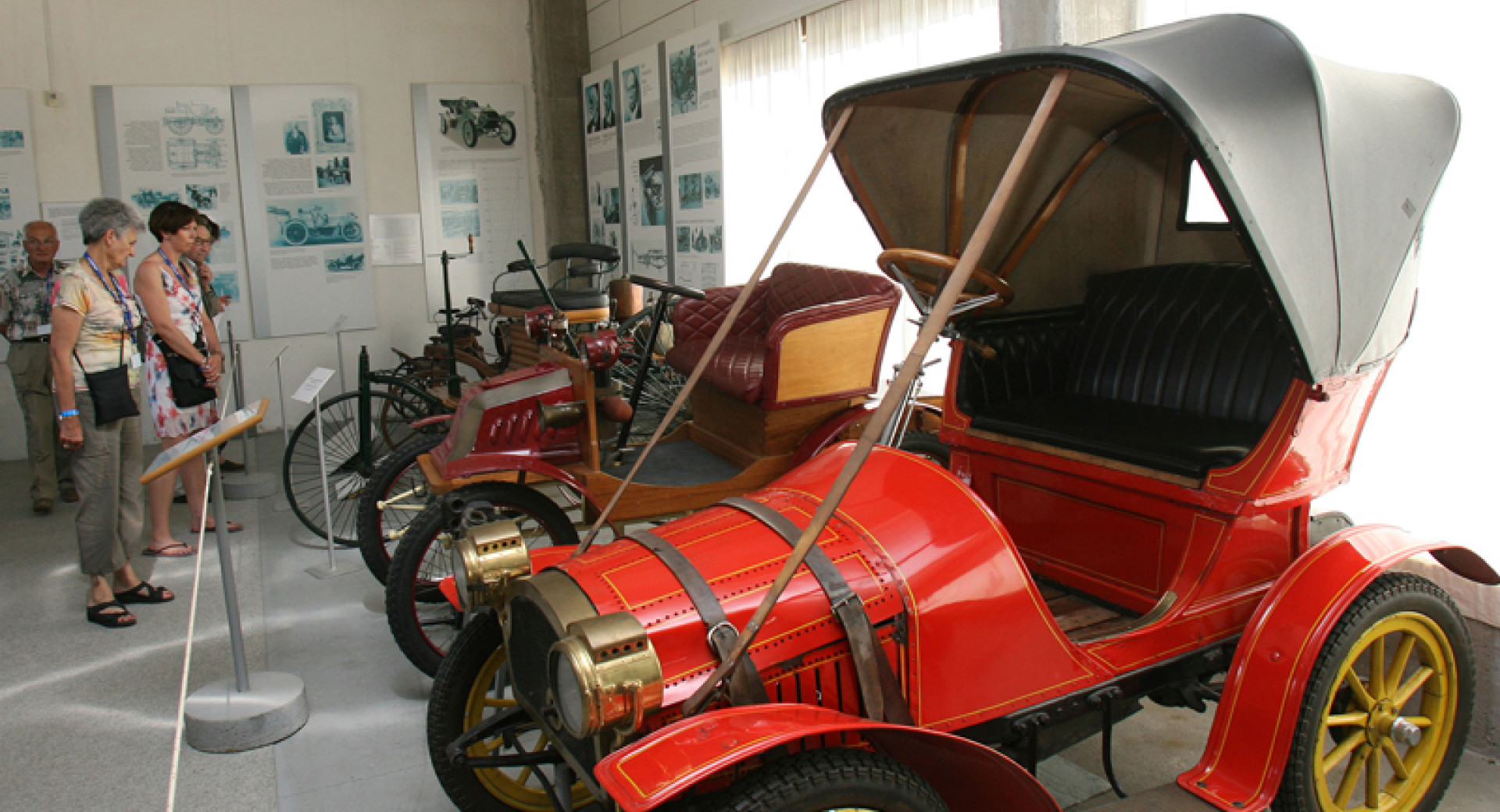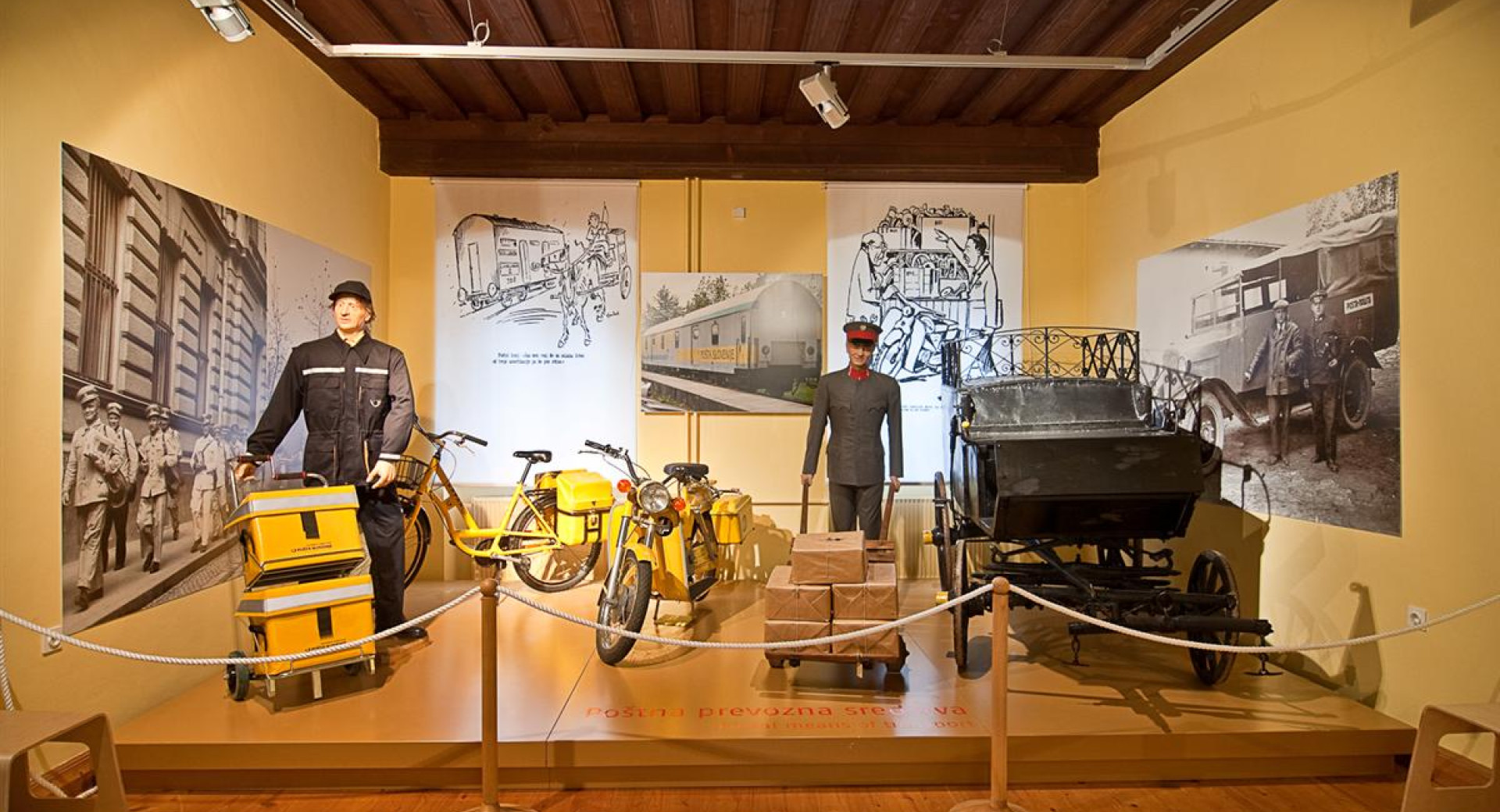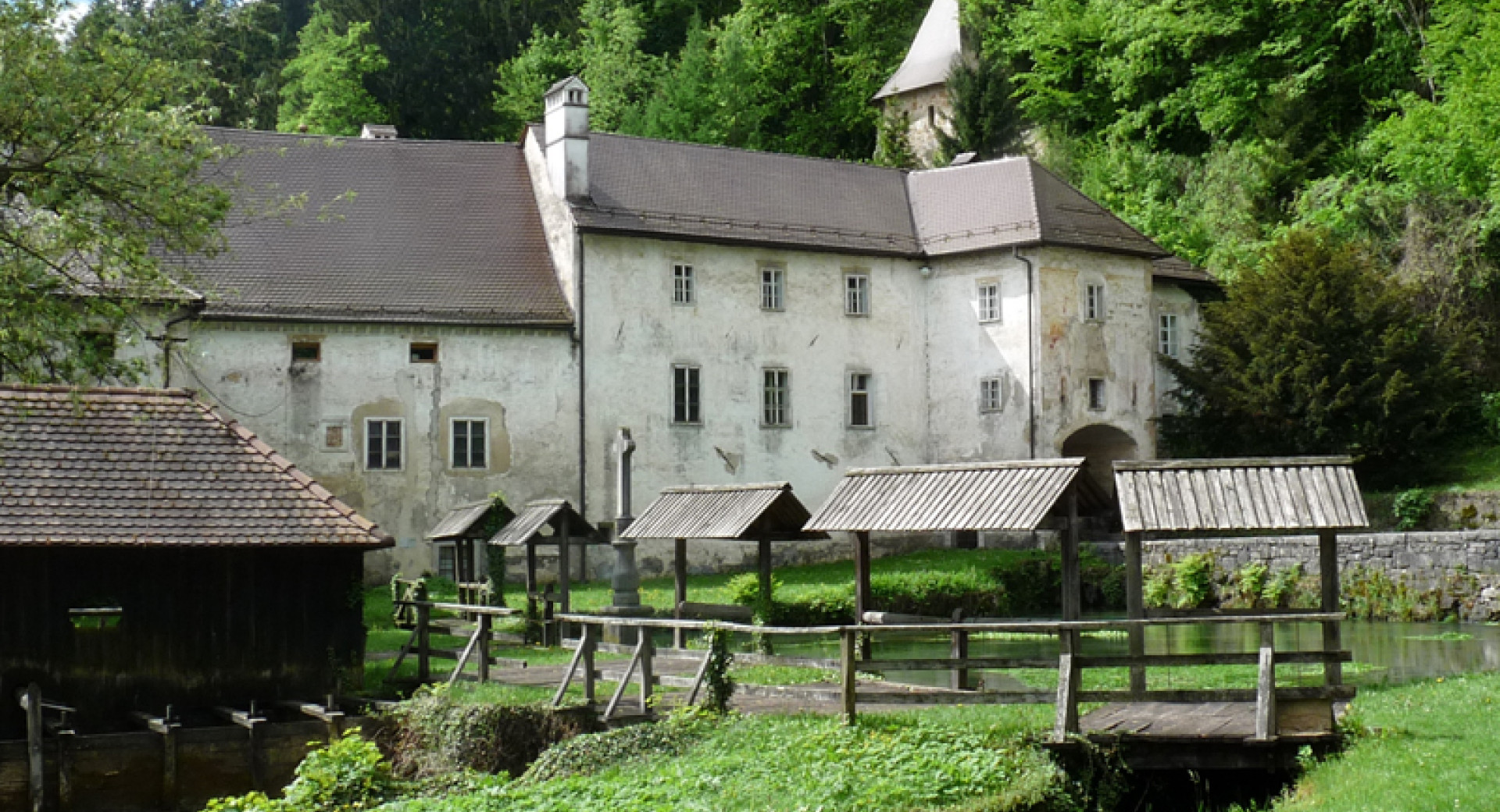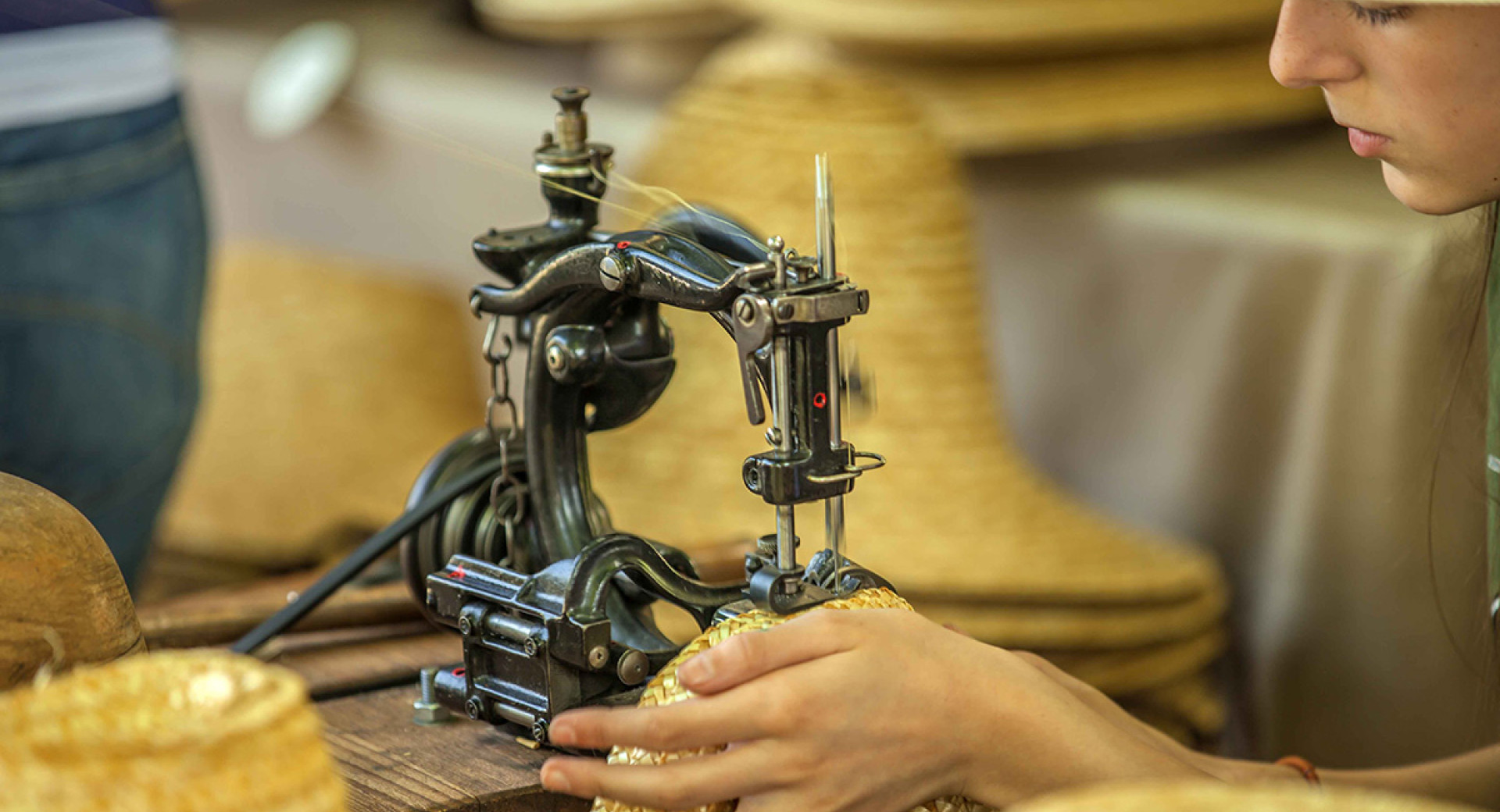Quirky Museums Around Ljubljana
Okay, let's admit it: the idea of visiting a “straw hat museum” sounds like the punchline of a joke about the most boring museum on the planet.

And for that reason, with a bit of hipster irony in mind, it just might be fun to go visit, right? That's what I was thinking, in my foolishness, when I first heard about the Straw Hat Museum in Domžale. But then I actually visited it. How wrong I was.
For this blog, I visited three museums that are just outside of Ljubljana. Each one sounds like it might not be the most exciting place on Earth: a technical museum, a postal museum, and a straw hat museum. But don’t start yawning just yet. All three are well worth a day-trip, and not just for hipster ironic reasons. I learned a lot, thoroughly enjoyed myself at each, and would head back for more at the drop of a (straw) hat.

Museum of Post and Telecommunications, foto: Blaž Zupančič
Museum of Post and Telecommunications – Polhov Gradec
Guidebooks will tell you that Slovenians eat dormice. Well, they used to, anyway, but I’ve never met a Slovenian today who still does. Many have dormice in the crawlspace under their roofs, but for lunch? Not so much. But Polhov Gradec, the name of which might translate as “Dormouse-ville,” does host an annual festival to celebrate the trapping of this critter who was once a prominent menu item.
The official version of the name’s origin story goes something like this:
In ancient times, a knight journeyed into a small village. Exhausted from his long travels, he took a break beneath a weathered beech tree covered in moss. Dormice, mischievous creatures by nature, couldn't resist their instincts and proceeded to chew through all the straps on the knight's saddle. Following the telltale bite marks, the knight promptly identified the culprits. His anger flared, and he grumbled, "Dormice, you troublemakers! This is not Gradec; it's Polhov Gradec!" And thus, Polhov Gradec acquired its name, which it retains to this day.
Whether or not he ate them in retaliation is lost to the mists of time. Whatever your taste in luncheon meats, I can heartily recommend the Museum of Post and Telecommunications. Curious how Europeans communicated through history? This may be about Slovenia, but in practice it’s a history lesson applicable to much of Europe, with a focus on the 20th century.
Let it be said that the location is stunning. It’s in a beautiful castle that looks straight out of a fairytale. The museum's extensive collection comprises a wide range of artifacts, from antique postal equipment and telegraph instruments to early telephone devices. Visitors can explore the development of mail delivery systems, understanding how they connected people and nations over time. The telecommunication section showcases the groundbreaking innovations that have transformed the way we communicate, from Morse code to the advent of the internet. Into philately? (That’s stamp collecting, by the way—don’t get any funny ideas). You’ll find a fine display of postage stamps here.
One of the museum's highlights is a well-preserved historical post office, where visitors can immerse themselves in the atmosphere of early 20th-century communication. The museum's knowledgeable staff often hosts workshops and interactive demonstrations, allowing visitors to experience the tools and techniques of the past. Most of the equipment on display still works, so you can try out electrical, optical, and acoustic tools for sending information from Point A to Point B.
Which might bring us to our next stop, the nearby Dormouse Adventure Park, a path running 1300 meters into the woods near the manor house that provides a light hike (it’s recommended that you give it around two hours) plus many activities for kids along the way. These include a post office for animals, a look into a badger’s den, and wildlife lookout points.
Speaking of getting from Point A to Point B, the next Point B could stand for Bistra…

Technical Museum of Slovenia, foto: archive
Technical Museum of Slovenia – Bistra
The postal museum is an extension of the very large Technical Museum of Slovenia, located in Bistra, near the town of Vrhnika, about ten minutes’ drive from Ljubljana. It’s housed in an enormous fortified complex, once a Carthusian monastery. I’ve been there several times, once with my young daughters and their friends. How interesting can a museum be for kids? This one was a big hit and was followed by requests for a return visit.
The museum has a broad scope, covering all technical or industrial innovations from Slovenia, dating back to the Middle Ages. This means a very diverse array of exhibitions covering a lot of space, 6000 square meters, in fact—you’ll easily get your 10,000 steps in. There you’ll find vintage cars, carriages, bicycles, and motorcycles, but also aircraft, farming machinery and scientific tools. If you’ve got a gearhead in the family, this is the place for them. Other sections include natural history specimens, early computers and televisions, hunting and fishing exhibits, woodwork, textiles, electricity, printing, metalworking industrial equipment, and even an exhibit on forestry. It’s a very full days’ worth of exhibits, and I can recommend the excellent restaurant adjacent to it. Or if it’s a nice day, you can pack a picnic lunch and eat out in the extensive grounds of the museum. If it’s a sunny day, hopefully you will have already visited the Straw Hat Museum, and taken home a hat of your own…

Straw Hat Museum, foto: Probakster
Domžale Straw Hat Museum
This is the one that most excited me when I visited it, but that I was initially least excited about. This tiny museum in Domžale, about ten minutes’ drive or a twenty-minute train ride from Ljubljana, is not just an exhibition about making straw hats, with a few samples on display. Rather, it offers a glimpse of the once-glorious past of the town of Domžale. I was totally flabbergasted to learn that Domžale is, quite literally, the world's center for making straw hats. That might sound like a dubious superlative but think back in time. Prior to the Second World War, all men wore hats when outdoors, as part of appropriate public attire. In warm weather or when doing labor, straw hats were preferred, as they are light and airy and still protect you from the sun. So, this was no small industry, since most of the world's population wore straw hats at one time or another.
Domžale began as a tiny village with access to fields of wheat, the straw from which was used to produce hats and baskets and other dry goods. The straw was set aside and dried. In foul weather or winter months, local families would braid the straw together into usable threads, called butarice (a word which I’ve heard often, sometimes about myself…it’s slang for ‘idiots’) which could then be sewn in the hats. These woven braids were either used at home, to prepare finished products, or were sold to factories that made them. In the late 19th century, some of the wealthier Hapsburg mercantile families, mostly of Austrian or German descent, moved to Domžale and found wives there, then set up factories for making straw hats. Circa 1900, there were 25 straw hat factories of varying size in tiny Domžale, with around 1000 people employed. This was out of a town population of just 1126 souls (circa 1856) that rose to 2156 by 1920. Those factories produced around a million straw hats a year! Subsidiary factories opened in Vienna, Budapest, Bucharest, Prague, Florence and even as far away as New York. That’s right…the New York branch was a subsidiary of the main headquarters in Domžale, Slovenia. In fact, 390 residents of Domžale moved to America, headhunted because of their expertise in, you guessed it, straw hat making. Many of the best straw hat makers were women, and there are photos of Domžale ladies teaching a factory full of Americans how to sew butarice. Will wonders never cease?
The tradition of straw hats dates to early Renaissance Florence, but a fresco in a church near Domžale, dated 1761, shows that straw hats were a thing around these parts in the Early Modern period.
The last factory, Univerzale, closed down in 2003, after 130 years in business. Now it is just a boutique art form practiced by a few enthusiastic locals. What truly astonished me was the fact that this small town has such a rich history of truly international imports. Straw hats were not exotic or oddball prior to the First World War, when hats were absolutely standard on the heads European and North American men. Sometimes the smallest and humblest of towns, in surprising locations, can have an impact on world history.
This is an incredibly rich tradition that not enough locals know about or take sufficient pride in. This is something to be proud of, but the Slovenian habit of humility (which is generally a plus) means that's sometimes an American has to come visit and sing the praises of local triumph. I'm delighted to do so. Especially when sporting my own straw hat.
Whether you’re into engineering, the postal system, or straw hats (and who isn’t, really), the greater Ljubljana region has a museum for you. They’re far more interesting than they sound and will make for a memorable half-day trip from Slovenia’s capital.
This blog is also available as a podcast, where you can enjoy listening to Noah's charming American accent.

